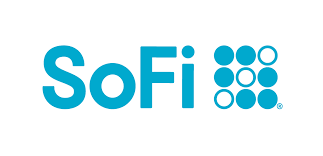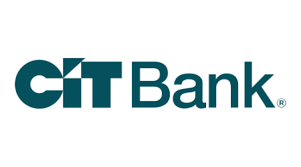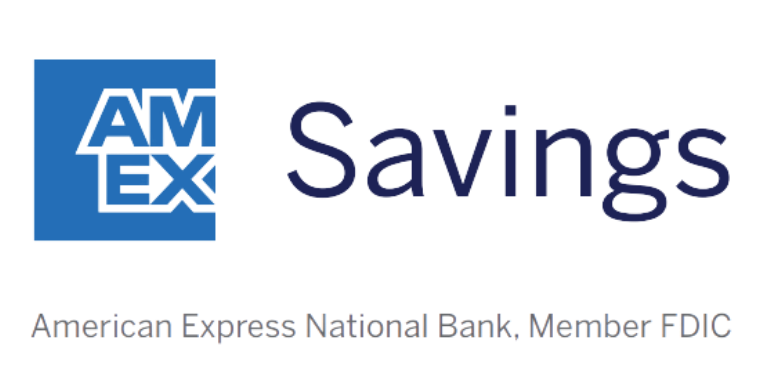When choosing where to keep your money, the decision often comes down to credit unions vs. banks. While both offer essential financial services, they differ in key areas like fees, customer service, and product offerings.
Understanding the pros and cons of each can help you determine which option best suits your financial needs and lifestyle.
At a glance: Credit union vs. banks
Credit unions compete with banks for customers, but there is more than meets the eye. Online banks now offer rates competitive with credit unions, and they offer different perks than legacy brick-and-mortar institutions. Here's an overview of how credit unions, brick-and-mortar banks, and online banks compare.
| Credit Unions | Brick-and-Mortar Banks | Online Banks | |
|---|---|---|---|
| Primary goal | Service members | Make profit | Make profit |
| Interest rates | Usually better | Typically lower | Often the best |
| Fees | Lower fees | Higher fees | Lowest fees |
| Services | Basic | Wide range | Usually limited |
| Customer service | Personalized | Varies | Mainly online/phone |
| Branch availability | Limited | Extensive | None |
| ATM network | Limited but often in networks | Extensive | Usually reimburse fees |
| Tech features | Basic | Good | Excellent |
| Regulation & insurance | NCUA, similar to FDIC | FDIC | FDIC |
Credit unions
A credit union is similar to a bank in many ways, but credit unions are nonprofit institutions. Because they're nonprofit, credit unions can usually offer market-beating rates on savings and checking accounts, mortgages, loans, and sometimes even credit cards.
Advantages of credit unions
- Lower fees and interest rates: Credit unions often offer lower fees and interest rates on loans and credit cards compared to traditional banks.
- Personalized customer service: They are member-owned, leading to a more community-focused and personalized approach to customer service.
- Higher savings rates: Members may benefit from higher interest rates on savings accounts and other deposit products.
Disadvantages of credit unions
- Limited accessibility: They typically have fewer branches and ATMs, which may limit convenient access to banking services.
- Fewer technological features: Some credit unions may offer less advanced digital banking options compared to larger banks.
- Membership requirements: Joining may require meeting specific eligibility criteria, such as living in a certain area or being part of an organization.
Banks
A bank is an institution where you can deposit savings and take out loans. Banks are often seen as a convenient and secure way to store money, and some account types also earn interest. Most banks have both online and in-person services.
Banks are for-profit organizations. At a bank, you can open checking and savings accounts, loans, credit cards, or other products. Almost anyone can join a bank.
Advantages of banks
- Wide accessibility: Banks usually have extensive branch networks and large ATM access, making banking services more convenient.
- Advanced technology: They tend to offer more sophisticated digital platforms, including mobile banking apps and online features.
- Variety of financial products: Banks typically offer a broader range of financial services, including investment options, wealth management, and international banking.
Disadvantages of banks
- Higher fees: Banks often charge higher fees for services like account maintenance, overdrafts, and wire transfers.
- Lower interest rates on savings: They generally offer lower interest rates on savings accounts and CDs compared to credit unions.
- Less personalized service: Due to their larger size and profit-driven nature, customer service can be less personal and more rigid.
Compare savings rates
Make sure you're getting the best account for you by comparing savings rates and promotions. Here are some of our favorite high-yield savings accounts to consider.
| Account | APY | Promotion | Next Steps |
|---|---|---|---|

Open Account for SoFi Checking and Savings
On SoFi's Secure Website.
Rating image, 4.50 out of 5 stars.
4.50/5
Our ratings are based on a 5 star scale.
5 stars equals Best.
4 stars equals Excellent.
3 stars equals Good.
2 stars equals Fair.
1 star equals Poor.
We want your money to work harder for you. Which is why our ratings are biased toward offers that deliver versatility while cutting out-of-pocket costs.
|
up to 3.80%²
Rate info
You can earn the maximum APY by having Direct Deposit (no minimum amount required) or by making $5,000 or more in Qualifying Deposits every 30 days. See SoFi Checking and Savings rate sheet at: https://www.sofi.com/legal/banking-rate-sheet.
Min. to earn: $0
|
New customers can earn up to a $300 bonus with qualifying direct deposits!¹
|
Open Account for SoFi Checking and Savings
On SoFi's Secure Website. |

Open Account for CIT Platinum Savings
On CIT's Secure Website.
Rating image, 4.50 out of 5 stars.
4.50/5
Our ratings are based on a 5 star scale.
5 stars equals Best.
4 stars equals Excellent.
3 stars equals Good.
2 stars equals Fair.
1 star equals Poor.
We want your money to work harder for you. Which is why our ratings are biased toward offers that deliver versatility while cutting out-of-pocket costs.
|
4.10% APY for balances of $5,000 or more
Rate info
4.10% APY for balances of $5,000 or more; otherwise, 0.25% APY
Min. to earn: $100 to open account, $5,000+ for max APY
|
Earn a bonus of at least $225 after a one-time deposit of $25,000+.
Transfer a one-time deposit of $25,000-$49,999.99 for a bonus of $225. Transfer a one-time deposit of $50,000+ for a bonus of $300. Account must be opened with code PS2025 while this promotion lasts, and funded within 30 days. Bonus will be fulfilled within 60 days from the funding date. There is no period of time where the customer will be required to maintain the funds. Account must be open when bonus is credited. One bonus per account and primary customer. Bonus will be credited into the Platinum Savings Account that fulfills the funding requirement. Funding can be deposited all at once or incrementally.
|
Open Account for CIT Platinum Savings
On CIT's Secure Website. |

Open Account for American Express® High Yield Savings
On American Express's Secure Website.
Rating image, 4.00 out of 5 stars.
4.00/5
Our ratings are based on a 5 star scale.
5 stars equals Best.
4 stars equals Excellent.
3 stars equals Good.
2 stars equals Fair.
1 star equals Poor.
We want your money to work harder for you. Which is why our ratings are biased toward offers that deliver versatility while cutting out-of-pocket costs.
|
3.70%
Rate info
3.70% annual percentage yield as of April 5, 2025. Terms apply.
Min. to earn: $0
|
N/A
|
Open Account for American Express® High Yield Savings
On American Express's Secure Website. |
SoFi disclosure:
¹ New and existing Checking and Savings members who have not previously enrolled in Direct Deposit with SoFi are eligible to earn a cash bonus of either $50 (with at least $1,000 total Direct Deposits received during the Direct Deposit Bonus Period) OR $300 (with at least $5,000 total Direct Deposits received during the Direct Deposit Bonus Period). Cash bonus will be based on the total amount of Direct Deposit. Direct Deposit Promotion begins on 12/7/2023 and will be available through 1/31/26. See full bonus and annual percentage yield (APY) terms at sofi.com/banking#1.
² SoFi members who enroll in SoFi Plus with Direct Deposit or by paying the SoFi Plus Subscription Fee every 30 days or with $5,000 or more in Qualifying Deposits during the 30-Day Evaluation Period can earn 3.80% annual percentage yield (APY) on savings balances (including Vaults) and 0.50% APY on checking balances. There is no minimum Direct Deposit amount required to qualify for the stated interest rate. Members without either SoFi Plus or Qualifying Deposits, during the 30-Day Evaluation Period will earn 1.00% APY on savings balances (including Vaults) and 0.50% APY on checking balances. Only SoFi Plus members are eligible for other SoFi Plus benefits. Interest rates are variable and subject to change at any time. These rates are current as of 1/24/25. There is no minimum balance requirement. Additional information can be found at http://www.sofi.com/legal/banking-rate-sheet. See the SoFi Plus Terms and Conditions at https://www.sofi.com/terms-of-use/#plus.
³ We do not charge any account, service or maintenance fees for SoFi Checking and Savings. We do charge a transaction fee to process each outgoing wire transfer. SoFi does not charge a fee for incoming wire transfers, however the sending bank may charge a fee. Our fee policy is subject to change at any time. See the SoFi Checking & Savings Fee Sheet for details at sofi.com/legal/banking-fees/.
⁴ SoFi Bank is a member FDIC and does not provide more than $250,000 of FDIC insurance per depositor per legal category of account ownership, as described in the FDIC’s regulations.
Any additional FDIC insurance is provided by the SoFi Insured Deposit Program. Deposits may be insured up to $3M through participation in the program. See full terms at SoFi.com/banking/fdic/sidpterms. See list of participating banks at SoFi.com/banking/fdic/participatingbanks.
⁵ We’ve partnered with Allpoint to provide you with ATM access at any of the 55,000+ ATMs within the Allpoint network. You will not be charged a fee when using an in-network ATM, however, third-party fees incurred when using out-of-network ATMs are not subject to reimbursement. SoFi’s ATM policies are subject to change at our discretion at any time.
⁶ Early access to direct deposit funds is based on the timing in which we receive notice of impending payment from the Federal Reserve, which is typically up to two days before the scheduled payment date, but may vary.
⁷ Overdraft Coverage is limited to $50 on debit card purchases only and is an account benefit available to customers with direct deposits of $1,000 or more during the current 30-day Evaluation Period as determined by SoFi Bank, N.A. The 30-Day Evaluation Period refers to the “Start Date” and “End Date” set forth on the APY Details page of your account, which comprises a period of 30 calendar days (the“30-Day Evaluation Period”). You can access the APY Details page at any time by logging into your SoFi account on the SoFi mobile app or SoFi website and selecting either (i) Banking > Savings > Current APY or (ii) Banking > Checking > Current APY. Members with a prior history of non-repayment of negative balances are ineligible for Overdraft Coverage.
How do credit unions and banks differ?
The key difference between a credit union vs. bank is that credit unions are nonprofits while banks are for-profit institutions. As a result, credit unions can offer lower loan rates and higher savings rates. However, credit unions tend to be smaller than national banks.
Also, credit unions usually have membership requirements, but these aren't hard to meet. Banks, on the other hand, serve just about anyone. Banks are often less flexible because they must serve diverse customer bases.
How do the financial services compare?
Personal loans
When shopping for a personal loan, there are two key factors that distinguish a credit union vs. bank.
First is the rates. As discussed above, you may be able to score a better rate with a credit union than with a traditional bank. This could save you hundreds or even thousands of dollars over the lifetime of your loan.
Credit unions may also have more lenient eligibility requirements. That means you could secure a personal loan from a credit union even when a bank might turn you away. They're worth considering if you have fair or poor credit.
Many online banks and lending institutions offer personal loan rates competitive with credit unions. But if eligible, you should check the rates offered by your credit union. Review websites might fail to fully consider the perks of credit unions, which tend to be exclusive.
Credit cards
You're more likely to find credit cards with banks than you are with credit unions, but some credit unions do offer them. Credit union credit cards may charge lower interest rates, but otherwise, they're the same as bank credit cards. Requirements for approval are often less stringent, though you must be a member of the credit union.
Mortgages
Choosing a credit union vs. bank for a mortgage involves many of the same considerations as any other type of loan. You may be able to score a better rate and have an easier time getting approved for a mortgage with a credit union than you can with a bank. But you have to be willing to accept more dated online services, which can make managing your account more of a hassle.
Which is better to have in a recession?
History shows that when it comes to a credit union vs. bank in a recession, the credit union is likely to fare a little better. Both can be hit hard by tough economic conditions, but credit unions were statistically less likely to fail during the Great Recession. But no matter which you go with, you shouldn't worry about losing money. Both credit unions and banks have deposit insurance and are generally safe places for your money.
What is right for you: a bank or credit union?
Shop around. Best advice, compare credit unions like you would banks. They're not the same, but you ultimately use them for the same purpose: to meet your banking needs.
When a credit union is a better choice than a bank:
Credit unions typically offer better rates to members than brick-and-mortar banks. They also tailor products to their communities, and customer service is sometimes better. Credit unions may provide better or more loan options to members with fair or poor credit.
When a bank is a better choice than a credit union:
Banks typically offer convenient online access and advanced technology compared to credit unions. Online banks may provide members with rates competitive with credit unions. Brick-and-mortar banks offer the most branches, ATMs, and nonessential banking services.
FAQs
-
Brick-and-mortar banks offer worse rates than credit unions, but the big ones have many physical branches you can walk into. They make in-person banking doable and have some of the biggest ATM networks out there. They may offer nonessential banking products like credit cards -- you may be able to manage all your monetary needs at one traditional bank.
-
Generally speaking, online banks offer the best rates on deposit accounts -- they're cheaper to operate, and banks pass savings onto customers. If you're technologically savvy and top-tier interest rates are your priority, online banks are your bread and butter.
We're firm believers in the Golden Rule, which is why editorial opinions are ours alone and have not been previously reviewed, approved, or endorsed by included advertisers. Motley Fool Money does not cover all offers on the market. Motley Fool Money is 100% owned and operated by The Motley Fool. Our knowledgeable team of personal finance editors and analysts are employed by The Motley Fool and held to the same set of publishing standards and editorial integrity while maintaining professional separation from the analysts and editors on other Motley Fool brands. Terms may apply to offers listed on this page. APYs are subject to change at any time without notice.